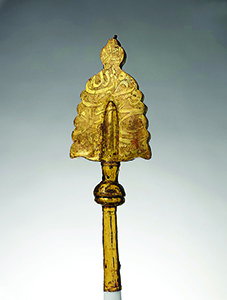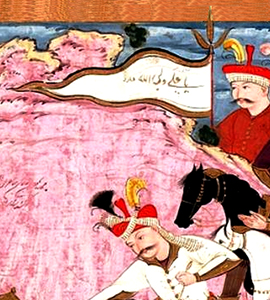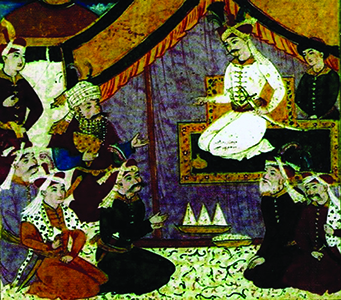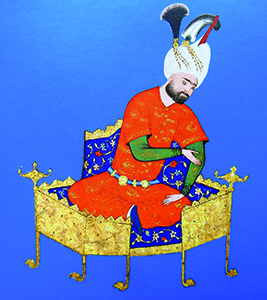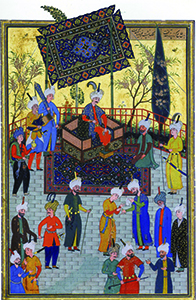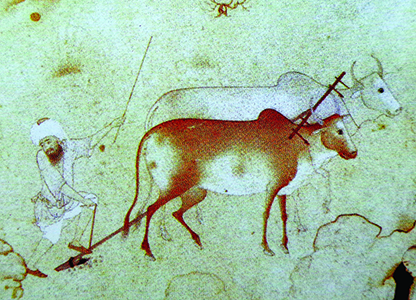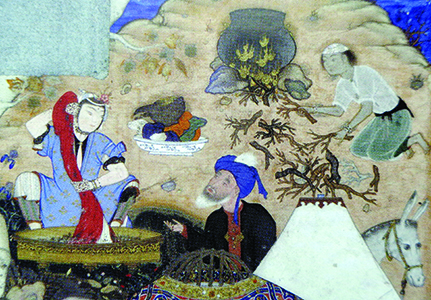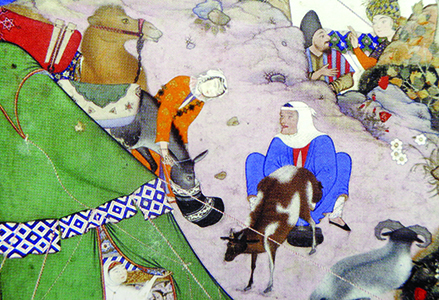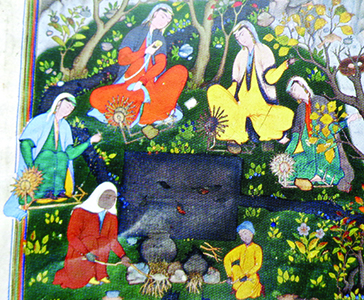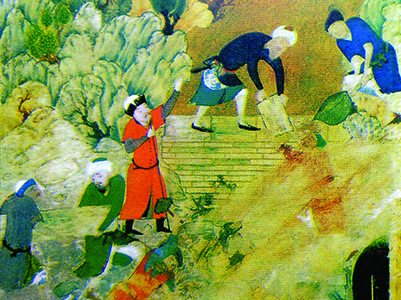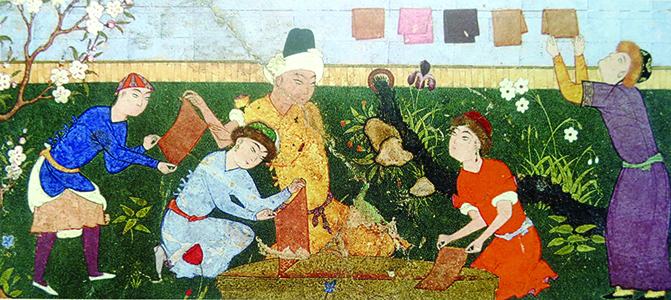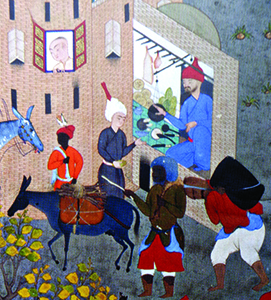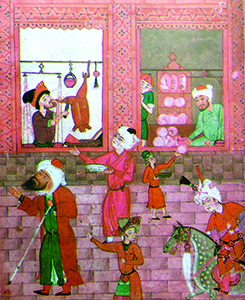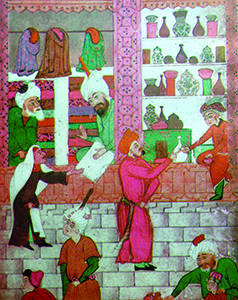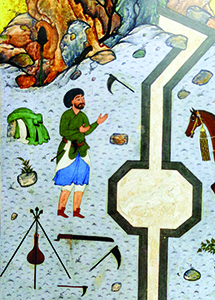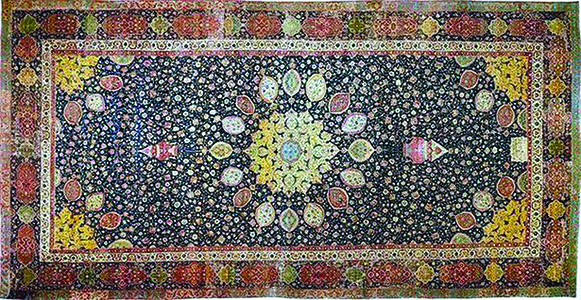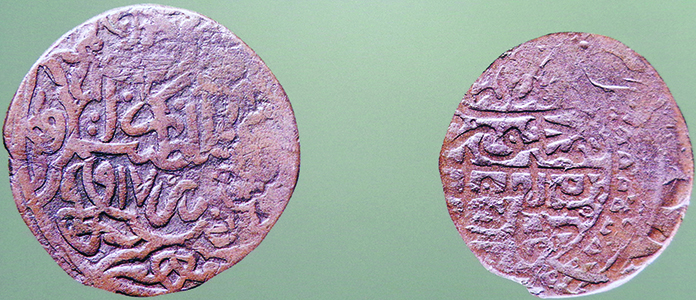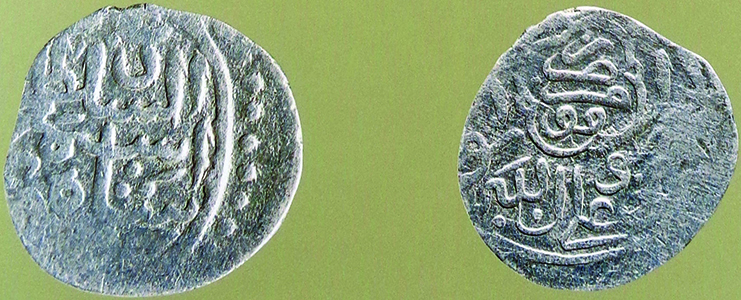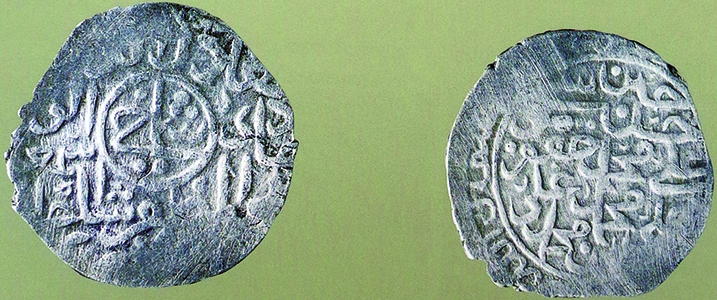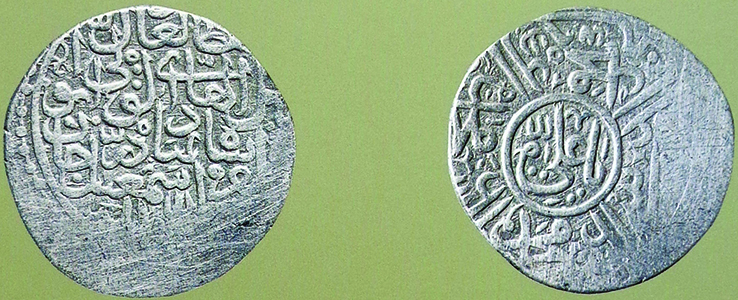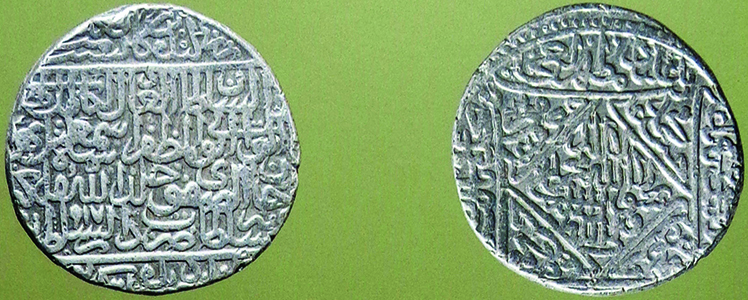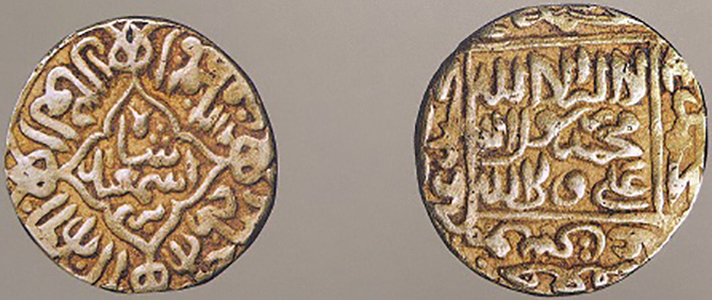Safavid state: administrative division, state apparatus, state language
The establishment of the Safavid state was a significant and progressive event in the history of Azerbaijan not only in terms of economic and ethnic unity, but also in terms of the development of statehood.
The official name of the state was "Dovleti-i Safavi", ie "Safavid state". Tabriz was the capital of the state in 1501-1555, Qazvin in 1555-1598, Isfahan in 1598-1736.
The Safavid state was a feudal monarchy. Although the system of government during the early Safavid rulers was simple, it was advanced for its time and allowed for more effective and rapid control of the situation.
At the head of the state apparatus was the shah, who was the sole owner of the country.
As head of secular power, he was considered a shah with unlimited power, as well as a supreme religious leader. Shah was the commander-in-chief of the country's troops.
The second person in the administrative hierarchy of the Safavids was a "vakil". He was, in fact, considered the deputy ruler. The lawyer was responsible to the Shah for state and religious issues, as well as for maintaining the positive image of the ruler.
After the lawyer, the most influential position was considered "vazir". The vazir, who was the head of the civil bureaucracy, could not interfere in religious and military affairs. Beginning with Shah Ismail I's son Tahmasib I, the bash vazir was gradually the second figure in the administration. At the same time, an authoritative structure - the Council of Supreme Vazirs - was established in the central system of government. This body provided complete control over the civil administration of the empire.
After Shah, the fourth leading figure was the "sadr". He was responsible for the religious situation in the country.
The country's chief financial officer was mustoufi al-mamalik ("treasurer of the provinces"), who reports directly to the minister.
The functioning of the judicial system was carried out by the Ali Divan – Supreme Court. The head of this structure was called "divanbeyi" and was appointed directly by the shah. He was considered the shah's aide in justice and law.
The country's consultative body, the Majlisi-ala, included influential emirs, statesmen and religious figures. This body was based on the council of emirs who helped Ismayil I to come to power. "Maslisi-ala" was an element of progressive government for its time and can be considered the predecessor of Azerbaijani parliamentarism.
The armed forces were led by "amir al-umara". He was responsible for uniting the troops from the tribes and bringing them to a state of full readiness. The second influential military post was called "Gorchubashi". He commanded the shah's personal guard. The state intelligence service was headed by the "caliphate al-khulafa".
Administratively, the state was divided into provinces. The number of provinces could vary depending on the political situation at different times. At the beginning of the XVII century, the state was divided into 13 provinces, headed by princes appointed by the shah. In many cases, the provinces were called “beylerbeyliyi” (principalities). At the head of each province was an emir with the title of "khan" and representing a certain tribe of Qizilbash. Each province also had tribal oymaq (villages) donated to different Qizilbash tribes, headed by an oymaqbeyi named "Kalantar".
The provinces under Beylerbeyi were divided into mahals; at the head of each mahal stood the mahal governor. The city leaders were called darga; large castles were ruled by kutval, villages by kendkhuda, and quarters by chiefs.
The entire elite in the country, including the military elite, consisted of qizilbashs, the Azerbaijani Turks of ethnic origin.
Shah Ismail I confirmed the native Azerbaijani language as a palace, army and court language. Persian has retained its importance as a language of civil administration and diplomacy. After Shah Abbas's reforms, the Persian-speaking influence in the Safavid state increased, but Azerbaijani Turkic retained the status of army, palace and court language until the middle of the XVIII century.
Economy of Safavid State
One of the important achievements of Shah Ismail I was the creation of a stable economic system. The economy of the Safavid state was based on agriculture. In turn, agriculture was based on semi-sedentary and sedentary farming. Livestock, sheep-breeding and horse-breeding were developed. Agriculture provided the country with grain, cotton and rice. The bulk of the country's exports were raw silk. Numerous irrigation systems and facilities were built in the country.
Craftsmanship has reached the highest level of development. The products of Shah's workshops were also sold to foreign countries. It is no coincidence that carpets, silk fabrics, weapons, ceramics, copperware, jewelry made by local masters still adorn the expositions of the world's leading museums. Thousands of urban workshops were able to fully meet the demand of the population for handicrafts.
The favorable geographical position of the Safavid state allowed numerous transit routes to pass through the territory of the state. Great attention was paid to the development of trade. Beginning with the reign of Shah Ismail I, economic unions were established and agreements were signed with many European and Eastern countries. Good roads and caravanserais have been built in the most important strategic directions. The development of roads and roadside infrastructure was even superior to the roads and infrastructure in the Ottoman state.
The monetary system of the Safavid state was based on silver monometallism. The first coins of the state date back to 1501. Large cities had their own mints. There were such mints in Tabriz, Ganja, Nakhchivan, Ardabil, Hamadan, Isfahan, Qazvin, Mashhad and Irevan.
Monetary system of Safavid state
Below is shown nominals of coins of the state 1 silver shahi (9.36 gr.) = 50 dinars ½ shahi = 25 dinars ¼ shahi = 12.5 dinars 1/8 shahis = 6.25 dinars 2 shahis = 100 dinars 4 shahis = 200 dinars 5 shahis = 250 dinars 10 shahis = 500 dinars 1 gold ashrafi = 5 shahi or 250 dinars 1 copper dinar = 4.68 gr
1 silver shahi (9.36 gr.) = 50 dinars
½ shahi = 25 dinars
¼ shahi = 12.5 dinars
1/8 shahis = 6.25 dinars
2 shahis = 100 dinars
4 shahis = 200 dinars
5 shahis = 250 dinars
10 shahis = 500 dinars
1 gold ashrafi = 5 shahi or 250 dinars
1 copper dinar = 4.68 gr
